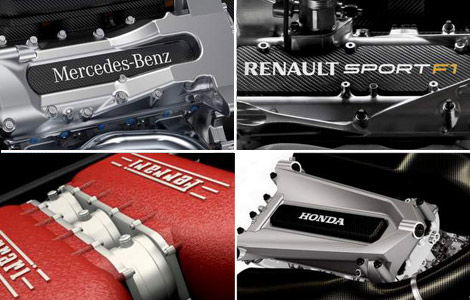

In the past, there have been whispers that F1 engine manufacturers have the capability to outsmart the regulations. This is normally done so that teams can eke out more power in the short term. However, the FIA has begun to take steps to close down these loopholes one by one.
Ever since the introduction of hybrid regulations, the likes of Mercedes, Ferrari, Renault and Honda have weaselled their way around the engine regulations. Over the last five years, some say that a few performances have drastically improved due to teams exploiting the gray areas of the regulations.
One example was the oil discussion where Ferrari and Mercedes were the main accused. Rumour had it that the two teams were using engine oil for the purpose of combustion and smuggling banned performance-enhancing additives into the fuel.
ADVERTISEMENT
Article continues below this ad
Another was the issue surrounding the battery. Many assumed that Ferrari’s two-part battery was influencing energy flow measurements. The supposed effect was that it more than the allowed 120 kilowatts (163 hp) to be harnessed from the electric storage.
During the 2019 pre-season winter test, new theories arose on illegal performances. They spoke of an illegal accumulator, which could save up to 0.1 liter of gasoline between the flow measurement of the FIA and the high pressure pump.

via Imago
The FIA are seriously cracking down
This could be highly effective in Q3 laps as it would allow more gasoline consumption. According to experts’ calculations, it would mean 4.5 percent more power.
ADVERTISEMENT
Article continues below this ad
The FIA has been repeatedly quizzed on this subject for a long time. Recently, Speaking to Auto Motor Und Sport, an engineer revealed, “This winter, there have been so many technical directives on the subject as never before.”
The F1 owners are trying to rule out gray areas, loopholes, or possible illegal rituals step by step as a reaction to the suspicions.
ADVERTISEMENT
Article continues below this ad
He continued,”We have become stricter in all areas where the engine manufacturers could theoretically overshoot the target,” confirmed FIA race director Charlie Whiting.
F1 has even introduced new weighing procedures to monitor the teams’ fuel consumption. In addition to that, there are a maximum of 100 kilograms on a race distance. This is seen as a safety check to confirm the flow rate measurements. In other words, the FIA is growing more and more vigilant with the allegations that more fuel may be injected than allowed.
ADVERTISEMENT
ADVERTISEMENT
ADVERTISEMENT


